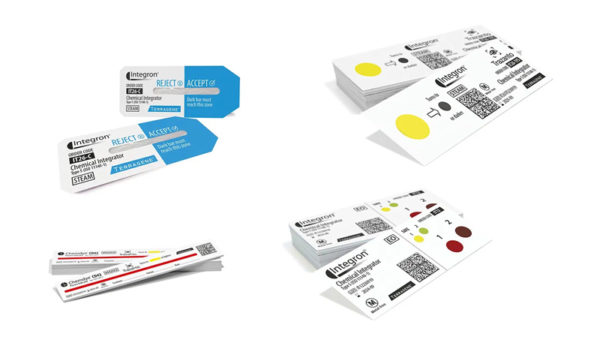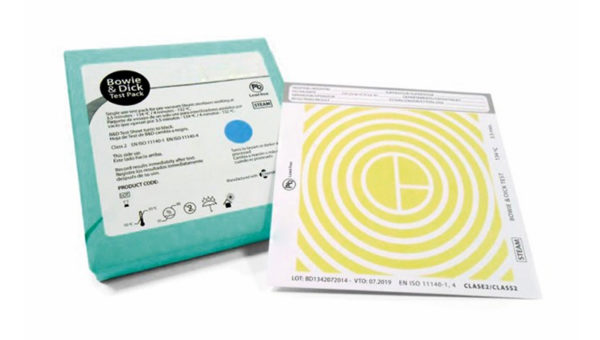
Terragene®, internationally recognized for its innovative capacity and quality, manufactures 100% of its products in Argentina and exports to more than 60 countries meeting demanding quality standards.It invests heavily in research, development and innovation of products and processes by applying state-of-the-art technologies. To this end, it has a professional group of excellence with vast experience in the fields of microbiology, genetics, biotechnology, chemistry, molecular biology and electronics.
1. Biological Indicator
 A bioindicator is any species (an indicator species) or group of species whose function, population, or status can reveal the qualitative status of the environment. For example, copepods and other small water crustaceans that are present in many water bodies can be monitored for changes (biochemical, physiological, or behavioral) that may indicate a problem within their ecosystem. Bioindicators can tell us about the cumulative effects of different pollutants in the ecosystem and about how long a problem may have been present, which physical and chemical testing cannot.
A bioindicator is any species (an indicator species) or group of species whose function, population, or status can reveal the qualitative status of the environment. For example, copepods and other small water crustaceans that are present in many water bodies can be monitored for changes (biochemical, physiological, or behavioral) that may indicate a problem within their ecosystem. Bioindicators can tell us about the cumulative effects of different pollutants in the ecosystem and about how long a problem may have been present, which physical and chemical testing cannot.
2. Chemical Indicator
 A pH indicator is a halochromic chemical compound added in small amounts to a solution so the pH (acidity or basicity) of the solution can be determined visually. Hence, a pH indicator is a chemical detector for hydronium ions (H3O+) or hydrogen ions (H+) in the Arrhenius model. Normally, the indicator causes the color of the solution to change depending on the pH. Indicators can also show change in other physical properties; for example, olfactory indicators show change in their odor. The pH value of a neutral solution is 7.0 at 25°C (standard laboratory conditions). Solutions with a pH value below 7.0 are considered acidic and solutions with pH value above 7.0 are basic (alkaline). As most naturally occurring organic compounds are weak protolytes, carboxylic acids and amines, pH indicators find many applications in biology and analytical chemistry. Moreover, pH indicators form one of the three main types of indicator compounds used in chemical analysis. For the quantitative analysis of metal cations, the use of complexometric indicators is preferred, whereas the third compound class, the redox indicators, are used in titrations involving a redox reaction as the basis of the analysis.
A pH indicator is a halochromic chemical compound added in small amounts to a solution so the pH (acidity or basicity) of the solution can be determined visually. Hence, a pH indicator is a chemical detector for hydronium ions (H3O+) or hydrogen ions (H+) in the Arrhenius model. Normally, the indicator causes the color of the solution to change depending on the pH. Indicators can also show change in other physical properties; for example, olfactory indicators show change in their odor. The pH value of a neutral solution is 7.0 at 25°C (standard laboratory conditions). Solutions with a pH value below 7.0 are considered acidic and solutions with pH value above 7.0 are basic (alkaline). As most naturally occurring organic compounds are weak protolytes, carboxylic acids and amines, pH indicators find many applications in biology and analytical chemistry. Moreover, pH indicators form one of the three main types of indicator compounds used in chemical analysis. For the quantitative analysis of metal cations, the use of complexometric indicators is preferred, whereas the third compound class, the redox indicators, are used in titrations involving a redox reaction as the basis of the analysis.
3. Bowie Dick
 It is important to ensure that materials processed in a laboratory autoclave have been exposed to adequate conditions for sterilization. Sterilization validation can be accomplished in a number of ways:
It is important to ensure that materials processed in a laboratory autoclave have been exposed to adequate conditions for sterilization. Sterilization validation can be accomplished in a number of ways:
- Physical monitoring through the autoclave’s display screen or print-out.
- Chemical monitoring with chemical indicators.
- Efficacy testing with biological indicators.
- Operational testing of the autoclave.
In the eighth installment of our Steam Sterilization Cycles Series, we discuss two test cycles used to ensure that a laboratory autoclave is performing properly: The Bowie-Dick Test (or dynamic air removal test), and the Vacuum Leak Test. These validation tests are used in a variety of applications, including the sterilization of medical devices, pharmaceutical goods, and waste from bio-containment laboratories.
